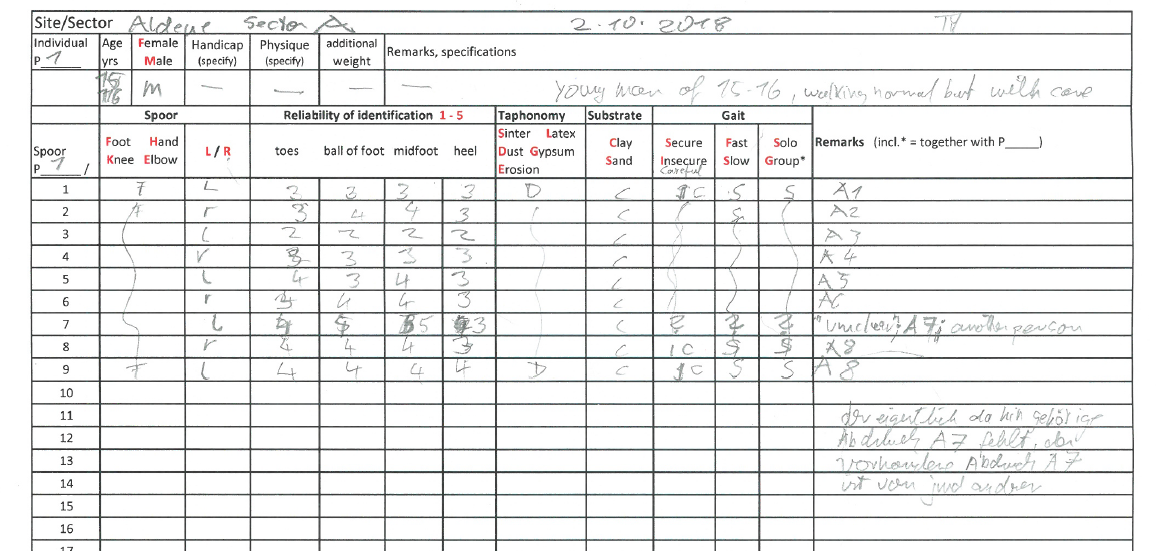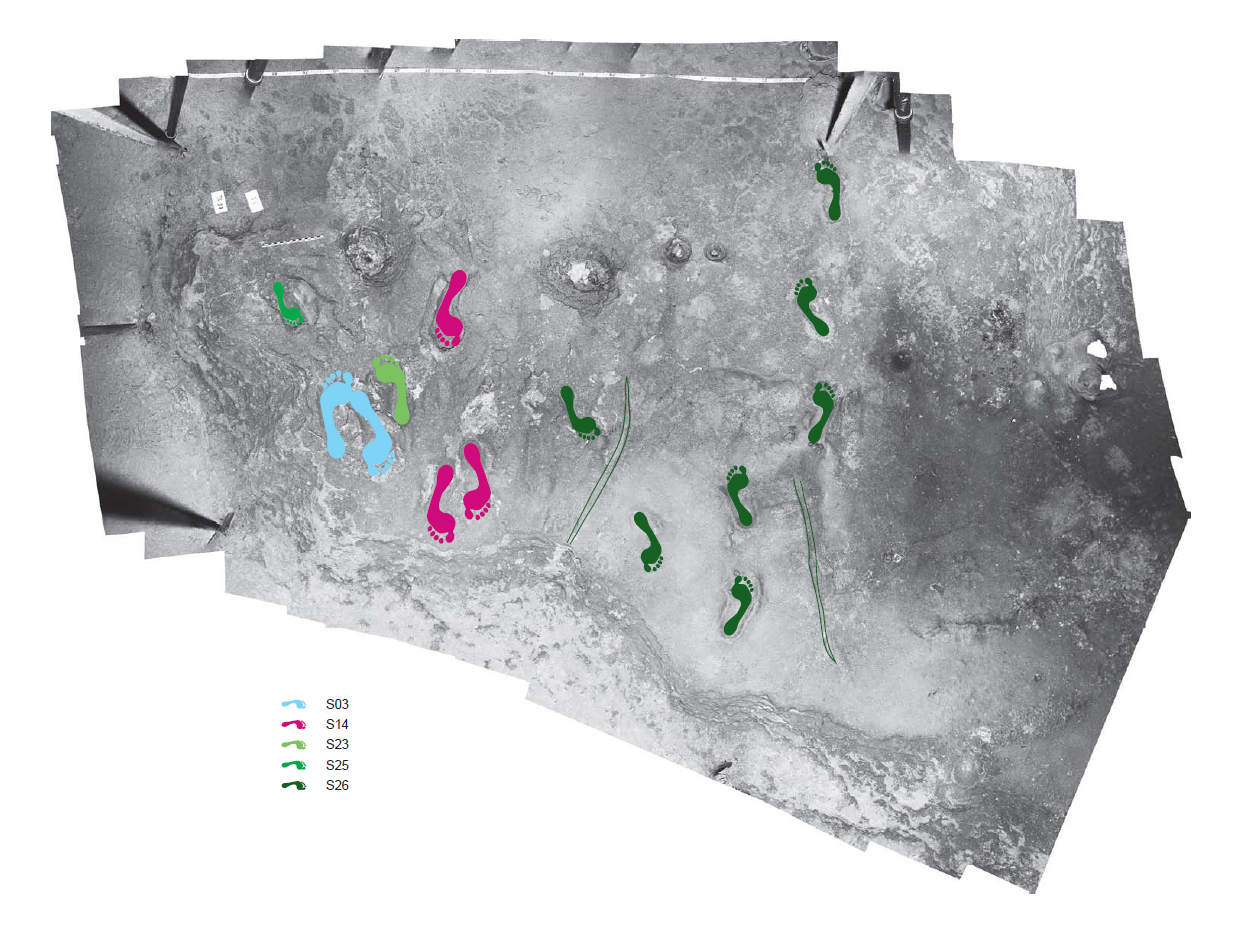The richness of Mesolithic footprints at Aldène (Cathala Level, Hérault, France) has been known for a long time. As part of a multidisciplinary project, the footprints were studied in 2018 by indigenous ichnologists from Namibia. Their results are presented in this paper and compared to results obtained by the morpho-metric approach. Through this set-up, the results obtained by the two approaches are mutually evaluated via cross-check. There were no contradictions, so that the results can be regarded
as reliable.
 |  |
Aldène: data table of footprint related to one subject, highlighted trackways on the ground (images: all rights reserved)
According to this, a group of Mesolithic people of about 25 subjects visited Aldène once for the purpose of exploring the Cathala Level. The group was composed of adults, adolescents and children of both sexes. According to the reconstructed body sizes of the adult trackmakers, they corresponded to the average body size of adult Mesolithic Europeans. The group was not close together as a unit, but split up into different small groups.
On the basis of the footprints, differences in behaviour on the way into the cave and the way out of the cave can be seen. On the way in, no member of the group carried anything additional with them. This changed on the way back, where eight adults and adolescents carried something, even though it is no possible to find out what exactly this was. Nevertheless, all evidence points at the possibility that the small children were carried on the shoulders, due to the fact – in the light of the reading of their tracks – they were in a hurry to leave the cave with considerably increased walking speed. The reason for this behaviour could be the "stop on autonomy" assumed by the analysis of the torch traces. After about 500 metres of intensive exploration of the Cathala Level, about 50 % of the torches brought along had been used up and the way back had to be started. The observation that the walking speed almost doubled during the way out testifies to the urgency of the lighting management problem that had arisen, which has obviously been solved by leaving the cave quickly.
Project information
This data was collected in the Tracking in Caves project. For further information about the Project see here. This presentation of the research results in terms of a semantic database about the footprints in the Aldène cave was build up in the context of the project "Die Volp-Höhlen. Untersuchungen an einer Schlüsselfundstelle zur Kontextualisierung paläolithischer Felsbilder", funded by the DFG and lead by Prof. Dr. Andreas Pastoors and Prof. Dr. Thorsten Uthmeier from the FAU Erlangen Nürnberg. The partner for hosting and maintaining the database is the FAU CDI. For the technical and semantic documentation see here.